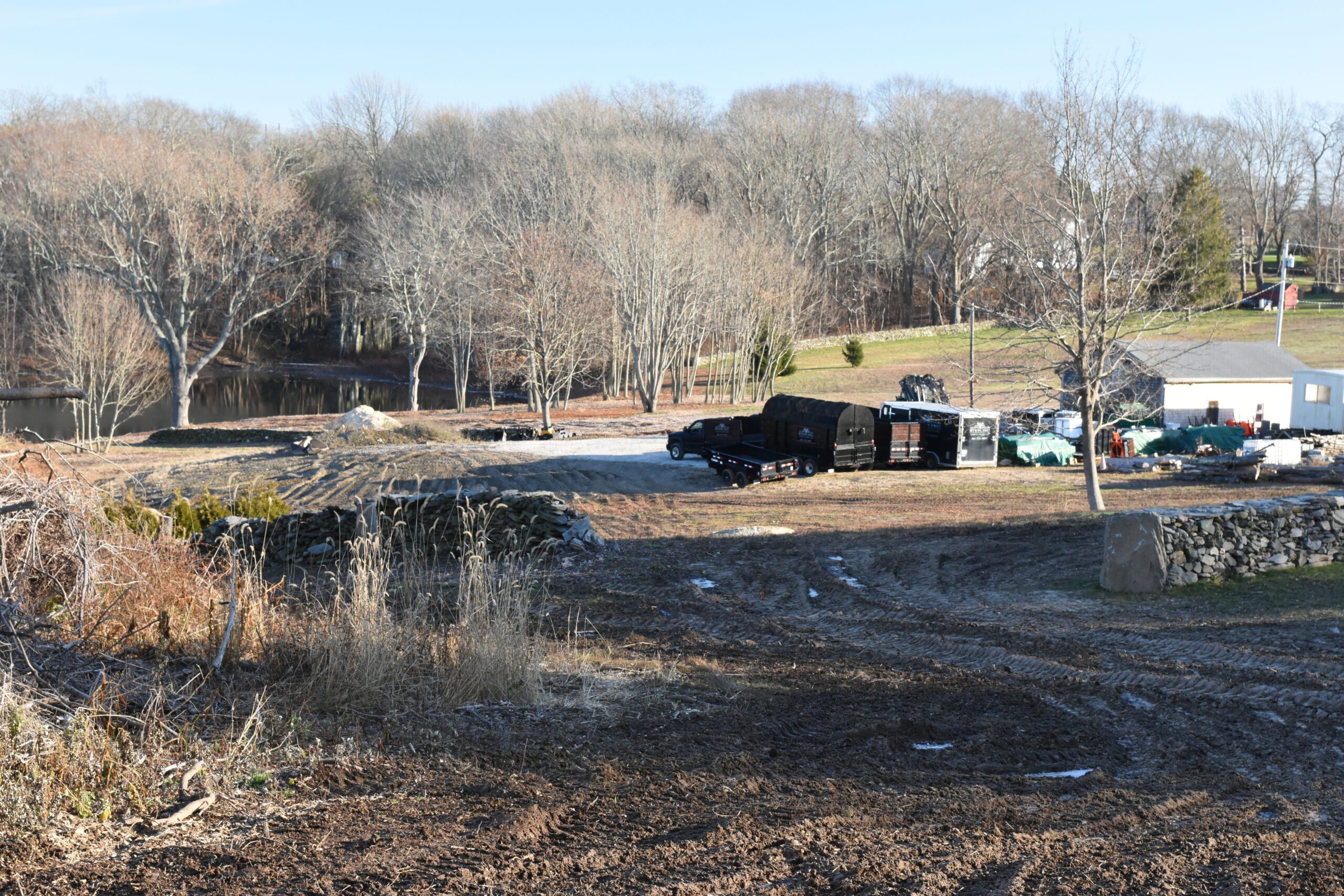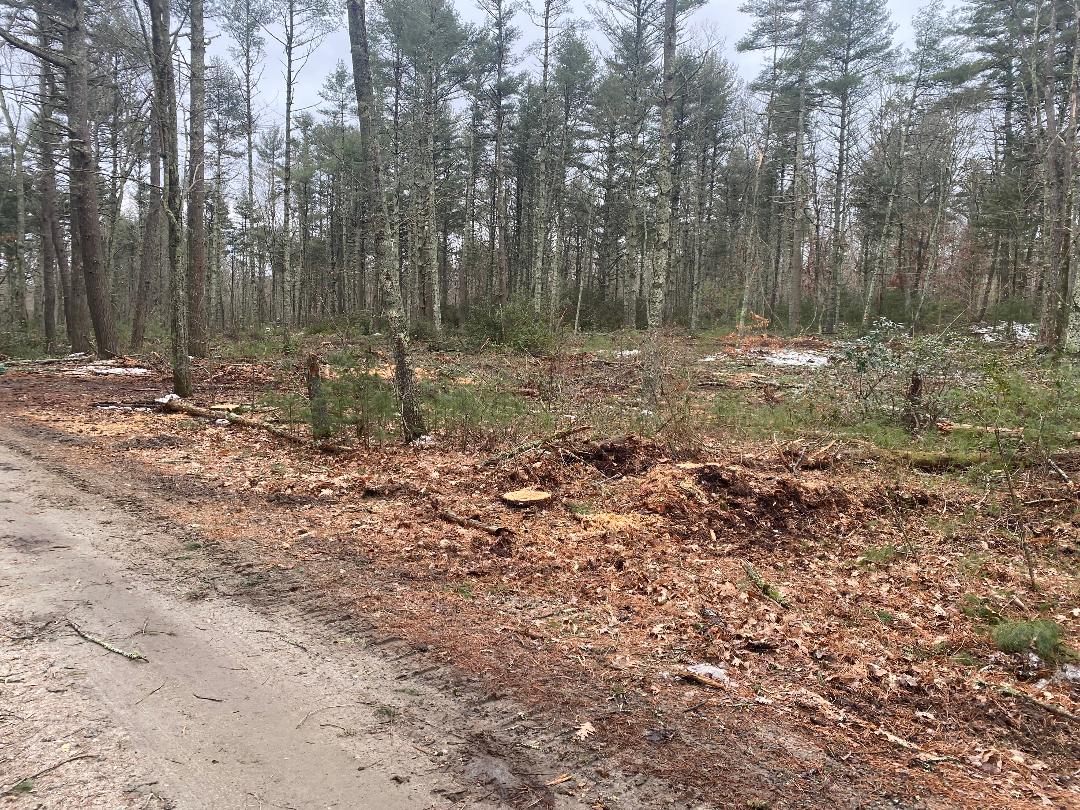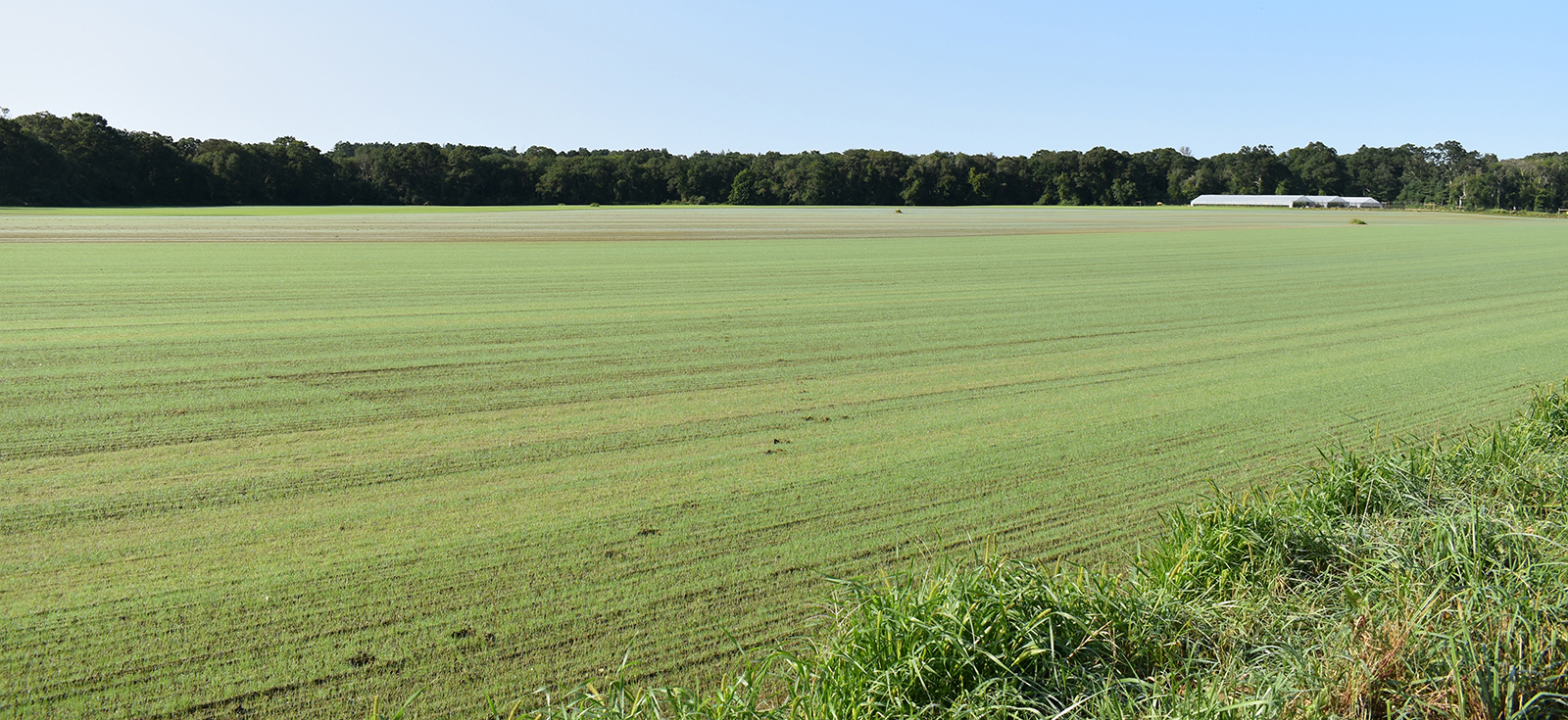Informal Collaboration (Un)paves the Way to Cleaner Almy Pond
May 20, 2021
NEWPORT, R.I. — More than 100 years ago, Frederick Law Olmsted, the landscape architect known for his work designing New York City’s Central Park and Boston’s Emerald Necklace, laid out his vision for an improved City-by-the-Sea.
He painted a picture of a verdant city dotted with green parks and clear waterways. In Newport’s southern half, where large summer estates were creeping toward a cluster of freshwater ponds, he saw an opportunity for a new park of “great benefit” to the public and working class.
“There is a need for a park in the extreme southern section of the city,” Olmsted wrote in his 1913 report for the city, “and I believe [Almy] Pond offers an opportunity that should not be neglected.”
But over the years, as other areas of Newport blossomed into green space, Olmsted’s vision of Almy Pond lay dormant. New housing estates circled closer. Fertilizer-heavy runoff from nearby homes began to cloud its waters with high levels of phosphorus. Blooms of toxic blue-green algae erupted, suffocating life inside the pond and making it unsafe for recreation. An Almy Pond Management Plan was created.
Almy Pond has recorded some of the highest measured phosphorus levels of any pond in Rhode Island, according to Save The Bay, and has staked its claim as one of the most threatened sites in the Narragansett Bay watershed.
Last week, the City Council approved the use of a $180,990 grant from the Rhode Island Infrastructure Bank to improve the pond’s northeastern end.
The grant will fund the removal of Spouting Rock Drive, a 25,500-square-foot loop of out-of-use pavement on Almy Pond’s east side. It was left behind after a proposed subdivision fell through in the late 1990s. The grant money will also help restore a natural meadow to the site now owned by the city and managed by the Aquidneck Land Trust as the Almy Pond Conservation Area since 2000.
The project — led by the Aquidneck Island Planning Commission and a coalition of local organizations — will “improve drainage and water quality of the pond, and act as a buffer against stronger and more frequent storms anticipated as a result of climate change,” according to the May 12 resolution.
“I think that it’s a great thing because it’ll have more green space, a permeable surface that will contribute to cleaning up Almy Pond,” City Council member Kathryn Leonard said before the resolution was unanimously approved.
The restoration work, which is yet to be put to bid, is planned to be completed by 2023. But environmental advocates agree more work is needed.
“This project will be part of the solution,” Jed Thorp, advocacy coordinator at Save The Bay, told ecoRI News, “but, given the high level of nutrient impairment in Almy Pond, a multi-pronged approach over several years will be needed to noticeably reduce nutrient levels.”
Dave McLaughlin, executive director of Aquidneck Island-based Clean Ocean Access, said the community needs to take more action. He said resident behavior must change throughout the watershed, which stretches up to Bellevue Avenue, for Almy Pond to see any improvement.
“When it rains, a drop of rain falls from the sky, it’s free. It’s safe to drink,” McLaughlin said. “Somehow, it travels on land and it ends up in our ponds, our reservoirs and our beaches — and it’s polluted. I mean, who’s doing that? It’s us.”
Chuck Allott, executive director of the Aquidneck Land Trust, is also aiming to engage landowners in the water-quality discussion and show what they can do to help. The drive for behavioral change is headed by the recently established Almy Watershed Protectors, an informal collaboration between the Aquidneck Land Trust, the Newport Tree Conservancy, Save The Bay, The Preservation Society of Newport County and Salve Regina University.
Almy Watershed Protectors also has plans to run a filtration pilot project on the pond in the coming weeks. The work will see charcoal-filled biochar “socks” placed on the pond’s edge to help eliminate incoming contaminants, including phosphorus.
Allott is hopeful the combination of projects will make a tangible difference to the pond, which is visibly degraded compared to neighboring Lily Pond.
“The interesting thing is if you look at aerial photography of the two ponds together,” he said. “Lily is blue in color and Almy is this algae-green color.”
For now, water quality is center stage, but Allott wondered if the future of Almy Pond looks anything like Olmsted’s century-old dream.
“It’ll be interesting to see whether organically, the community comes around an idea of doing some passive recreation down in that area,” he said.
McLaughlin, too, is peering hesitantly down the road.
“What is the long-term vision for Almy Pond? Is it that people can go in there and kayak? I mean, maybe. It sounds nice to me, you know,” McLaughlin said. “But this is the first step, and it’s a good one.”




I recently moved here from Ca. I was sickened to find the pond behind me has been allowed to deteriorate to the point of not even being able to go near it, why has it taken the DEM so long to address the problem ? I left Ca. because they couldn’t seem to do anything right, I am hoping I have not jumped from the frying pan to the fire.